Alienwares QD-OLED monitor sets a new standard for gaming displays
High-end TVs and gaming monitors have been on a collision course for the past few years. The TV industry has pursued the best-looking picture, while monitors have opted for the fastest display tech. The crash that blends the two worlds together might have finally happened with Alienwares latest curved gaming monitor, which has a QD-OLED screen. Its the first device (of several more to come in 2022) to show what Samsungs new QD-OLED display technology is capable of for PC users, specifically.
The AW3423DW, as its officially (and clumsily) called, is now available for $1,299.99, beating Samsung and Sonys forthcoming QD-OLED TVs to market. Actually, while its technically available, the soonest delivery date for new buyers of this QD-OLED is currently late June. So, those TVs might find their way into plenty of homes by the time people finally get their hands on this monitor.
But those will still be TVs, and this is a monitor. While this isnt the first OLED targeted toward PC gamers, the AW3423DW is the kind of monitor that I have been waiting years for. I dont want to have a tall TV on my desk, even if it is one of the smaller 42-inch LG C2 OLED TVs that are releasing this spring. The AW3423DW looks like a gaming monitor, with its immersive 1800R curve and 21:9 ultrawide (3440 x 1440) design. And, with a display capable of 175Hz refresh rate, it acts like one but has far better picture quality and brightness thanks to QD-OLED. At $1,299, Alienwares pricing seems right on the money, coming in for less than next-gen TVs with many (but not all) of the same perks.
Theres a lot riding on QD-OLED panels given that Samsung Display claims they boast some key improvements over standard OLED. They promise a brighter image while still maintaining the excellent control over brightness thats been a hallmark of OLED displays. What does that mean practically? The ability to be more accurate with brightness means QD-OLEDS can theoretically produce colors more accurately than traditional OLED displays. So, the reds and greens of nature that might look a little more muted on other displays will feel vibrant and more real on a QD-OLED. It comes down to the quantum dot layer (thats the QD in the name), which converts blue light into red and green when needed, without the need for color filters typically used in standard OLED panels. Color filters tend to diffuse or dim the picture in some instances, especially when viewed at an angle. Thats not an issue here.
The AW3423DW delivers on the promises of QD-OLED with a bright picture (like, give-you-a-headache bright), unbelievably good viewing angles, and gorgeous colors. Jumping into the dense, green forests on Shadow of the Tomb Raider looked amazing. The first taste of what the technology is capable of is a delicious one, and I like it even more because its in a smaller design made for PC gamers.
As a gamer, I was consistently impressed with the HDR performance, too. OLEDs can struggle with HDR performance in brighter areas. The plume of an explosion wont be quite as detailed in HDR on an OLED display versus LED. Yet, with a powerful PC rig attached, games look fabulous on the AW3423DW. Explosions popped. I tested out all of the games that I hoped would look great here, like Destiny 2, No Mans Sky, Deathloop, and Cyberpunk 2077. Thanks to that 1800R curve, practically any game that puts the player in a world with a grand amount of scale looks phenomenal especially considering that Im looking at the AW3423DW from about one foot away. Ive used curved gaming monitors before, but this QD-OLED panels combination of curve and vividness were the missing factors that pulled me further into my games. It might sound cliche, but I feel like Im really seeing games as their makers intended.
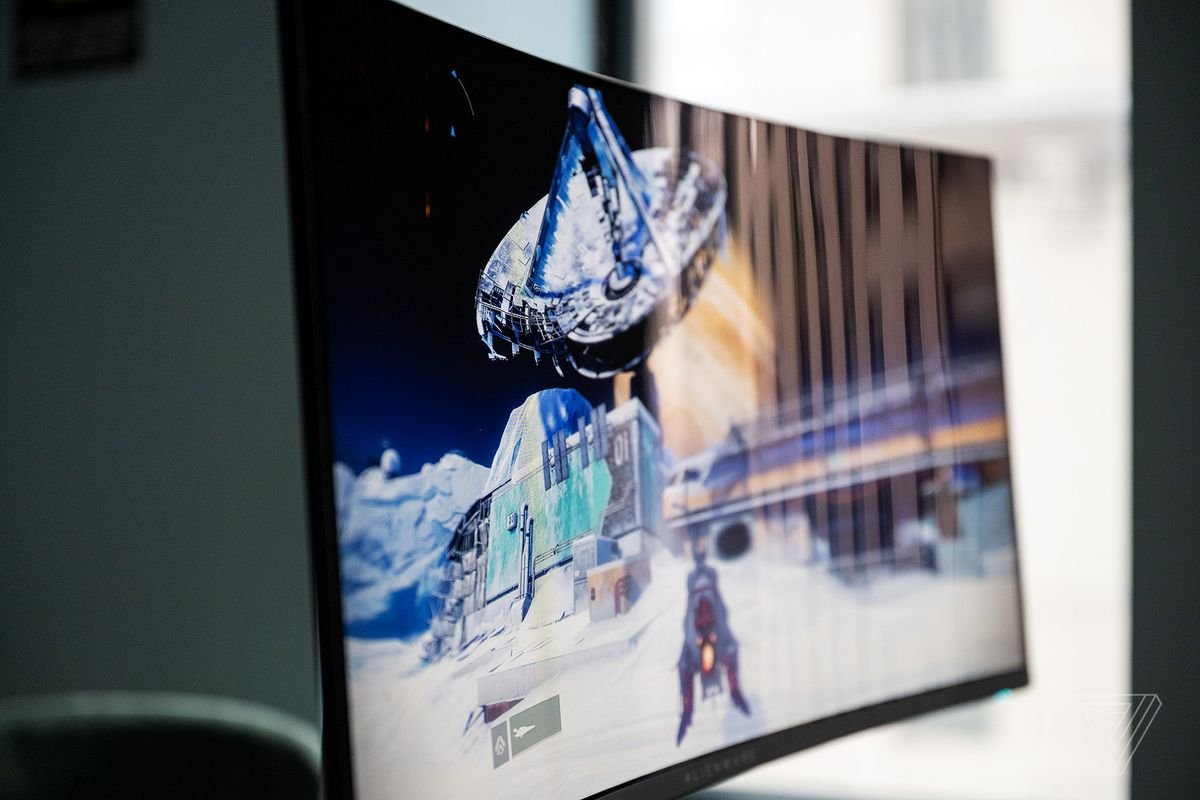
But not every game plays nicely with the 21:9 aspect ratio. Sadly for me, that currently includes Elden Ring, which registers the native 3440 x 1440 resolution in its settings but still slaps black bars on the screen to confine it to 16:9. Theres a downloaded tool called Flawless Ultrawide that can force ultrawide, but you apparently run the risk of getting caught by Elden Rings anti-cheat system by using it.
Nevertheless, Elden Ring looks fantastic on the AW3423DW. I was in the Academy of Raya Lucaria section of the game when I first received the monitor for testing, and I was impressed with how radiant the effect of using glintstone sorcery appears on the QD-OLED. On my IPS panel at home, the same effect looks more muted and decidedly less cool. Glintstone sorcery should look powerful and unwieldy, and it finally does on this display.

If youre purely gaming, you may not need to make any adjustments to the color profile, but the out-of-the-box contrast and brightness settings were not suitable for simpler use cases, like using productivity apps namely Gmail, Slack, or Google Docs. Out of games and in the world of text, the off-whites and grays didnt have the color separation that they should. Everything just kind of blended together. While the out-of-the-box pre-calibrated settings were great for games, I had to create a new calibration profile for simple productivity tasks. Its an annoying extra step switching between calibration profiles depending on the tasks but it definitely felt worth it when playing games.
HDTVtest has an interesting video about another possible pitfall of QD-OLED (or at least this one) for productivity tasks. According to their analysis, it produces a color fringing effect that can be seen while typing in a word processor or completing a similar task. But that flaw wasnt distractingly noticeable during my testing.
Back to the topic of screen settings, I was less than impressed with the on-screen UI of the AW3423DW and its bottom-mounted joystick thats used to move about the interface. Its generally confusing to navigate, and it looks out of place on a high-end monitor. My greatest moments of disappointment with this monitor were when I was trying to outsmart the interface, which commonly makes it harder than necessary to make simple adjustments.
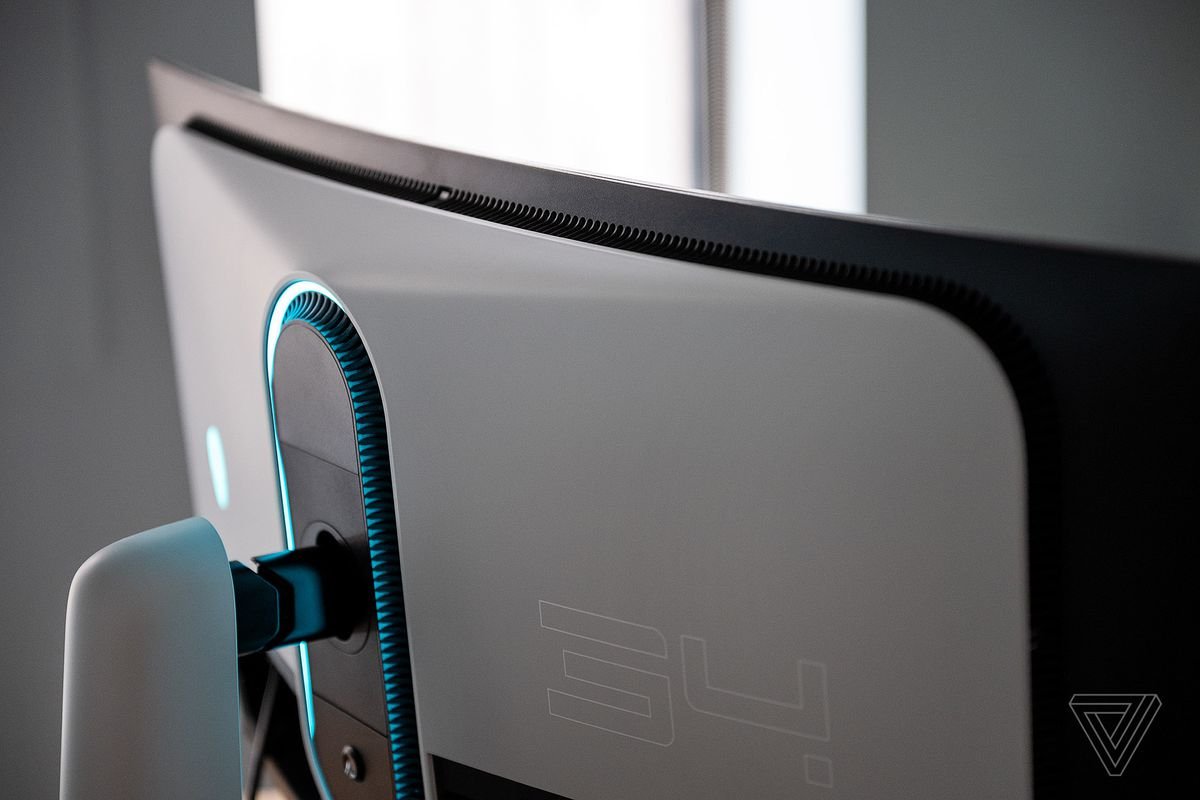
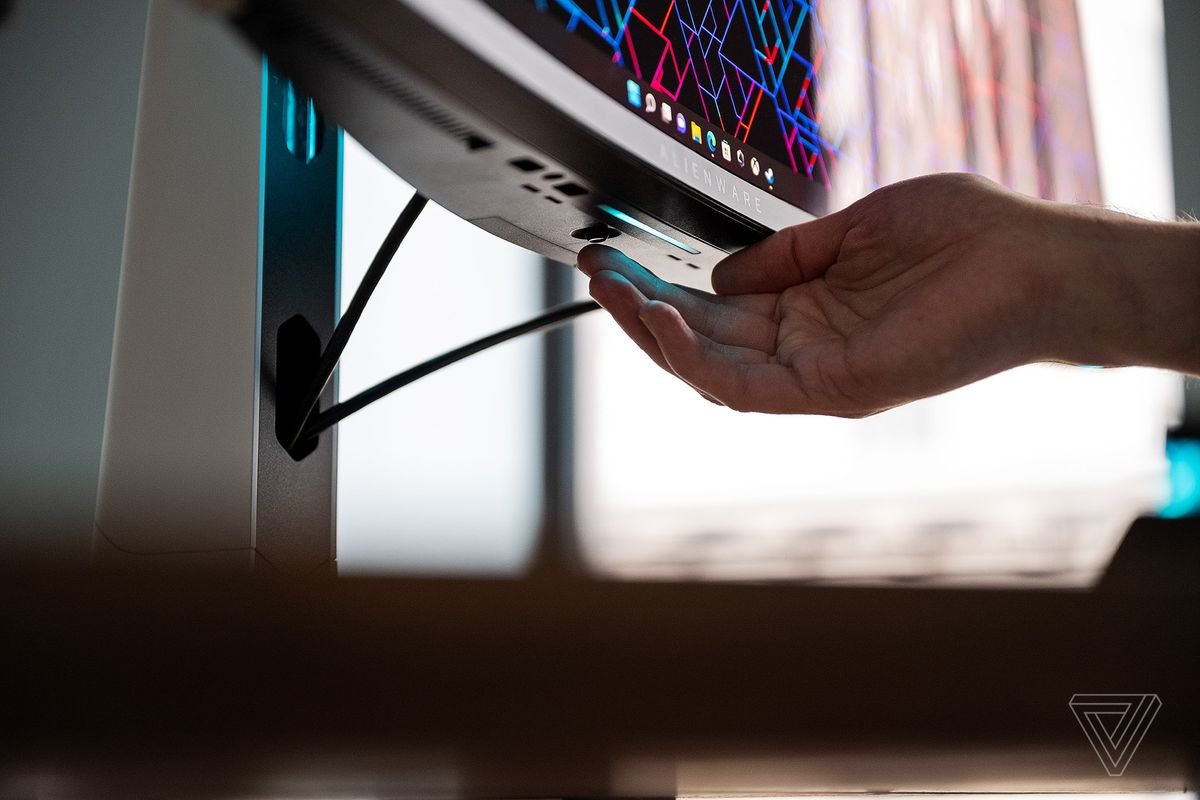
The AW3423DW isnt the only OLED that can deliver amazing picture quality, bright colors, and true blacks. You can still use an OLED TV as a gaming monitor. And, if youre someone who watches a lot of movies and TV shows and enjoys console gaming, getting something like LGs 42-inch C2 might actually be the better buy. Thats mainly because it has a 16:9 aspect ratio, allowing modern gaming devices, be it a PC, a Switch, or the Xbox Series X or PS5, to fully fill out the screen, in addition to having HDMI 2.1 and 4K 120Hz support for consoles and PC. Plus, LG claims that its latest OLEDs are brighter than ever, but we havent been able to test them yet ourselves.
On the AW3423DW, Microsofts Xbox Series X or Sonys PS5 consoles are limited to displaying in 16:9 (hello, big black vertical bars on the sides of the picture). And while Microsofts console can at least render at QHD (2560 x 1440) resolution at 120Hz refresh rate, the PS5 can only do a measly 1080p at 120Hz on this $1,300 screen. (Youll first need to turn on Performance Mode within the PS5s game preset settings.) Needless to say, its not much fun to play games like that.
While this monitor was built to take advantage of all the bells and whistles that Windows has to offer, it can, of course, display a nice-looking picture on macOS computers. Though, its very much a results may vary kind of experience. With my 2019 Intel-based MacBook Pro connected (via a Thunderbolt 3 dock through DisplayPort), the AW3423DW displayed at native resolution, with the option to boost the refresh rate up to 120Hz (175Hz wasnt an option). At the 60Hz and 100Hz options, High Dynamic Range was available as an option when the Alienware was in its HDR Peak 1000 mode, but the picture wasnt noticeably altered by the setting.
Things were different once I connected a newer 2021 MacBook Pro with the M1 Pro chip and not necessarily in all good ways. While the AW3423DW could go up to 175Hz with this laptop connected, and it could support variable refresh rate (1Hz-175Hz), enabling HDR was never an option. All said, the results could differ if you use, say, a Thunderbolt 4 dock, or a USB-C to DisplayPort for a direct connection to the monitor. But in my testing, I wasnt able to take full advantage of the AW3223DWs features in macOS.

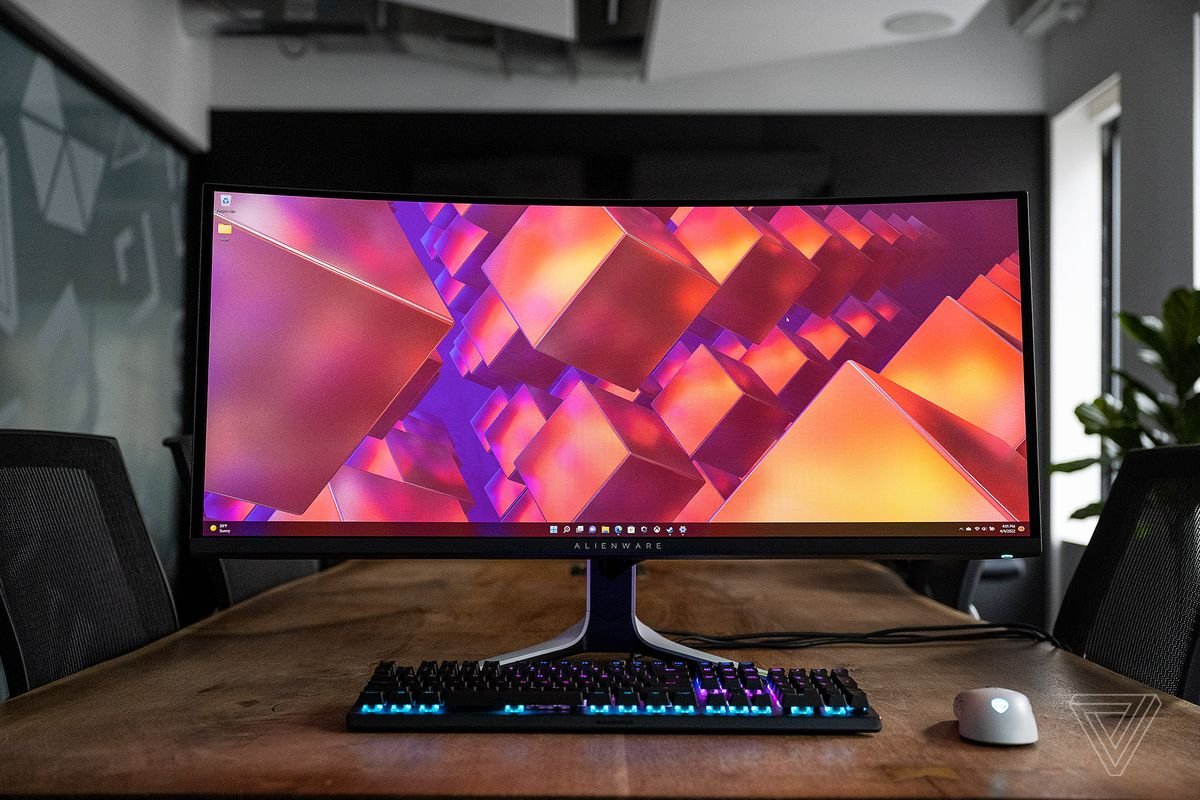
The AW3423DW has the slight advantage when it comes to brightness. Standard OLED TVs, like the LG C1 we reviewed last year, can sometimes appear dim because of an Automatic Static Brightness Limiter, a mechanism thats in place to prevent pixels from overheating. In our review, Sean Hollister said the OLED panel got so dim during his non-gaming use that it caused eyestrain. Well, after using this QD-OLED, I can safely say that this isnt an issue here. But that doesnt mean those auto-dimming techniques arent present; they just arent as noticeable.
This monitor can display a small white window close to or directly on Alienwares claim of 1,000 nits of peak brightness. But expanding it to cover more of the screen will cause it to dim, as is usually the case with OLEDs. This can be seen in both of the AW3423DWs HDR modes: HDR Peak 1000 and DisplayHDR 400 True Black (though True Black generally looks less bright at default settings with less of a dramatic shift in tone as you scale content up and down in size). This dimming effect is especially noticeable if you have two windows side by side in dark mode and switch one over to white, which causes the entire panel to take a noticeable step down in brightness.
If you want to get in the weeds, check out the technical analysis from the YouTube channel HDTVtest that shows the AW3423DW dipping to a low of around 280 nits with white taking up the full screen. Compare that to RTINGSs review of the LG C1, which measured 125 nits of peak brightness with a similar test. The QD-OLEDs gains are minor but a step in the right direction especially if youre playing games that have a lot of snow or highlights.
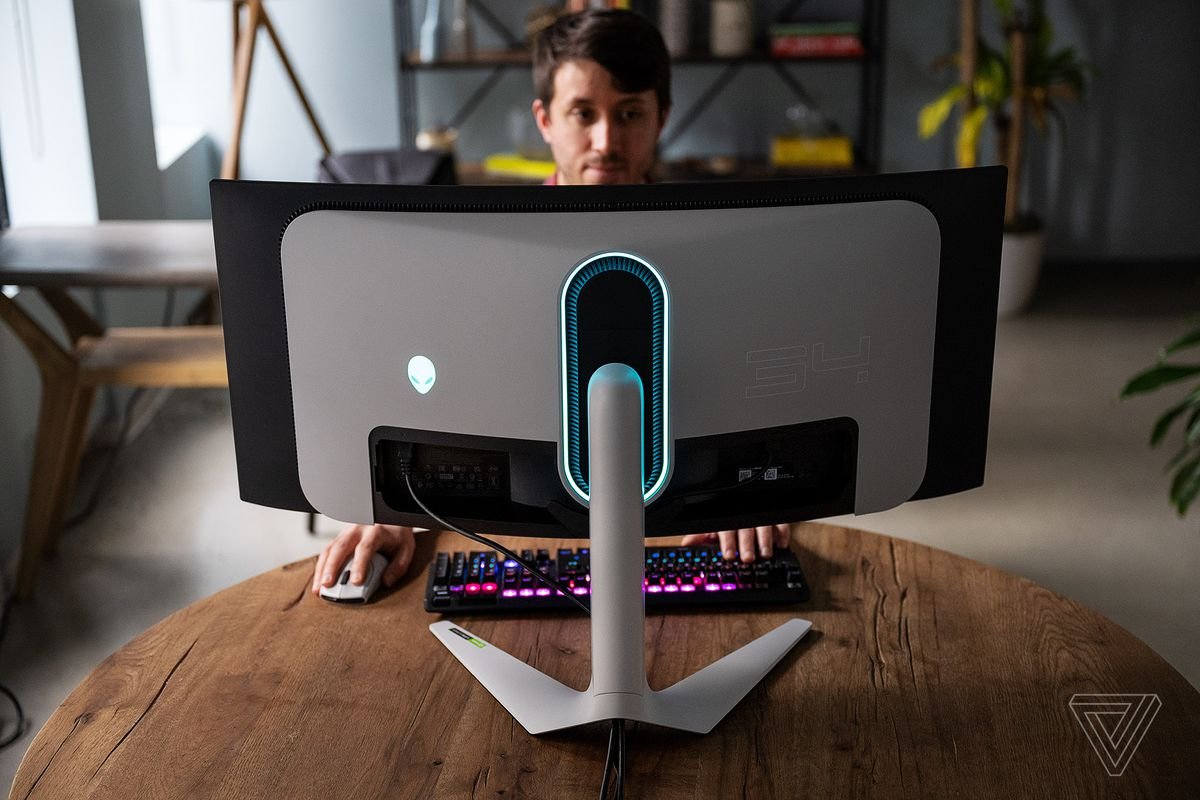
One other interesting observation from HDTVtest is that you may notice better contrast and darker blacks with the AW3423DW (and perhaps other QD-OLEDs if theyre built the same way) in a dimly-lit room. The monitors screen coating omits a light-reflecting polarizer, and thus, deep blacks can appear gray if youre using it in a well-lit room. I didnt notice a huge difference in day-to-day usage at The Verges offices. Blacks still looked inky and deep in a well-lit room, but viewing the display in the dark makes everything look even better.
You may be considering Alienwares QD-OLED monitor alongside some other curved monitors. Some of the most popular models are Samsungs 49-inch Odyssey G9 and the newer Odyssey Neo G9 curved gaming monitors. The AW3423DW is a clear winner for a few reasons but none more convincing than its price, which is just a couple hundred dollars more than the $1,000 Odyssey G9.
The Odyssey Neo G9, for all of its improvements including impressively bright Mini LED backlighting, costs $2,000. Itd be a good alternative for people who want way more screen real estate (along with an eye-searing 2,000 nits of peak brightness) if not for a few show-stopping issues that we encountered during our reviews.
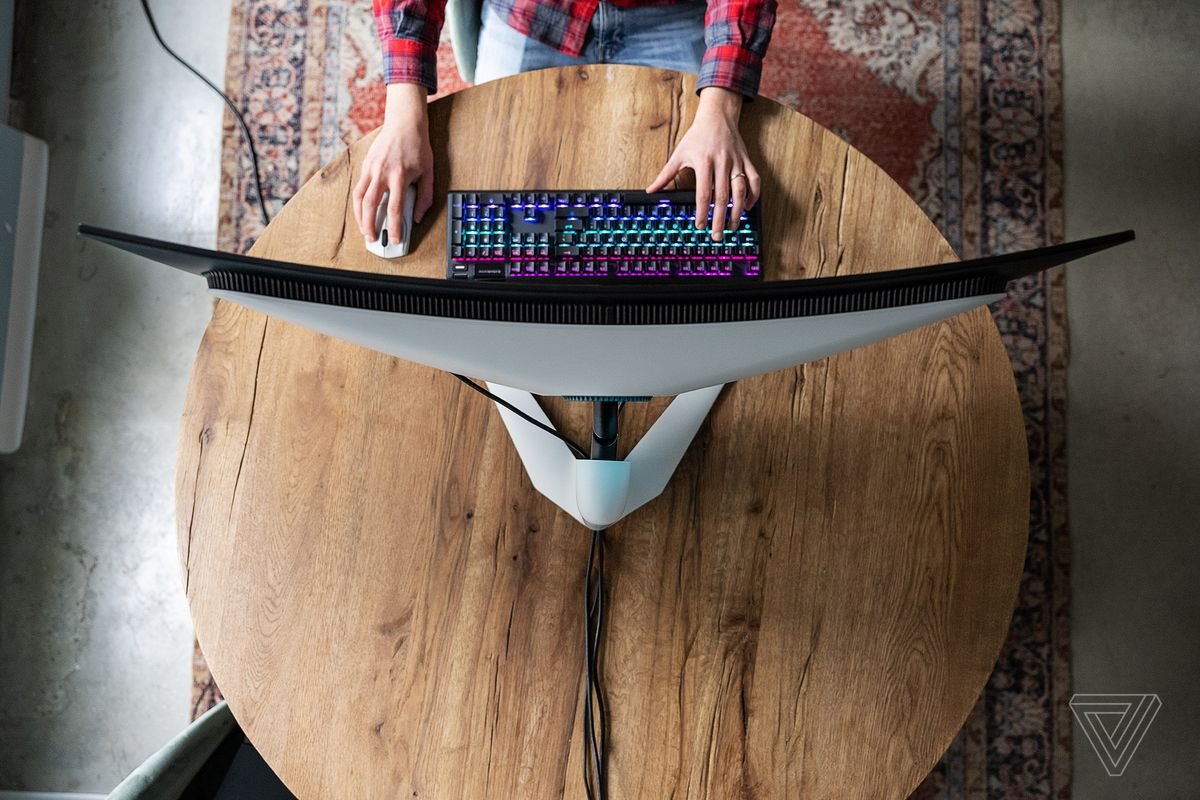
If youre a gamer, the 32:9 aspect ratio that Samsung used on both the Odyssey G9 and Odyssey Neo G9 could be an immersion-breaker. Even in games that have ultrawide compatibility, we noticed that there was usually stretching around the edges of these monitors. Thats less of a knock against Samsung and more on the limited use cases of that ultra-ultrawide screen size. Then, there are the bigger issues. In our Neo G9 review, we noticed off-colored shadows in games as well as instances where the monitor displays horizontal lines when the colors darken. That may not happen with every unit, but its not an issue that youll have with the AW3423DW.
OLEDs can be a little more sensitive to extended use versus LEDs, and there are a couple of features built into this monitor to safeguard the panel and extend its lifespan. One is a pixel-shifting technique that happens automatically, triggering every few minutes. It shifts all of the screens pixels in a direction, yet its hardly noticeable. Then, theres pixel refresh, a process that takes about seven minutes to complete. The monitor will ask you to perform it if its been on for four hours straight. If you decline, itll perform the feature automatically the next time the monitor enters standby mode should your use exceed four hours. Lastly, the panel refresh feature can be manually triggered (it will happen automatically after 1,500 hours of use) to completely refresh every pixel in the QD-OLED. It supposedly takes an hour to run through that process.
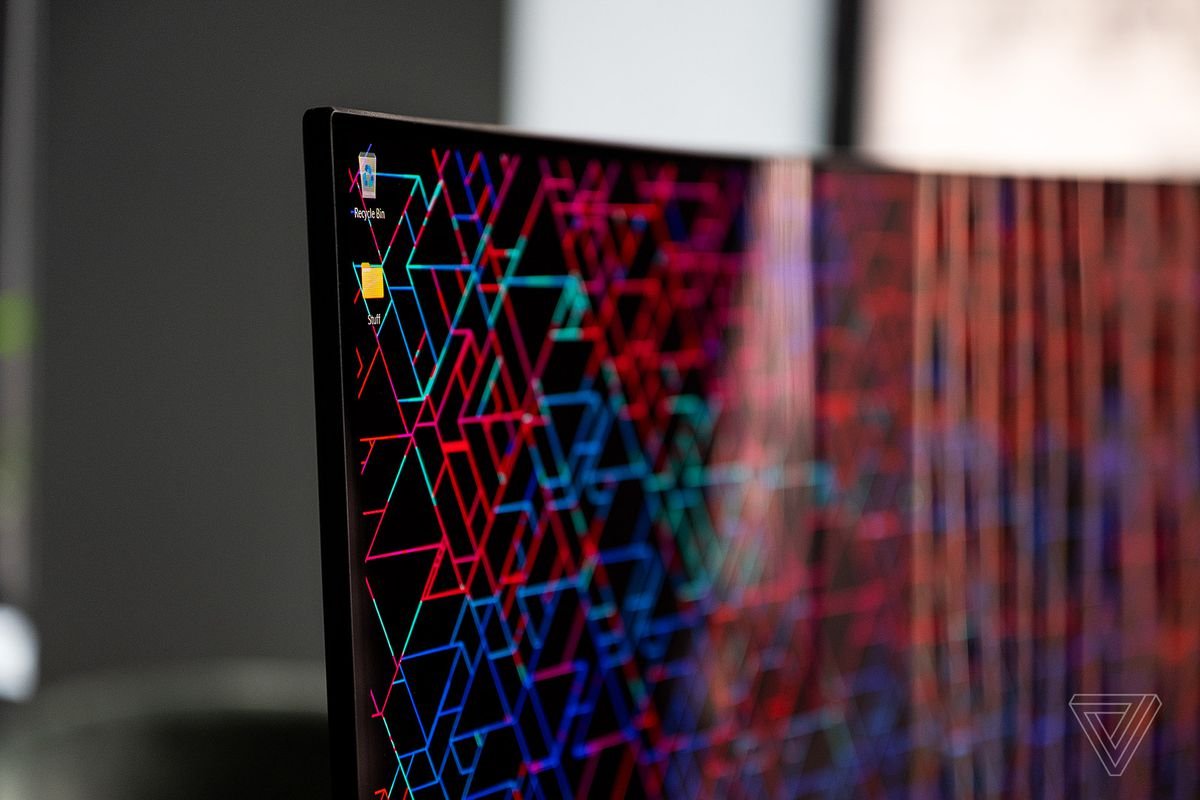
Despite being a first-generation product, the AW3423DW doesnt feel like one. $1,300 might sound like a lot to pay for an ultrawide QHD monitor and it is a lot of money but Alienware got the price right here. Whats more, it costs less and looks better than many 4K monitors that Ive seen. And it lives up to Samsung Displays promises by delivering a brighter picture than weve seen before in OLED TVs.
Yet, it may not be the perfect monitor for everyone. Its on-screen display and joystick controls are far less intuitive to use than they should be, and it may take some time to tweak the displays settings to suit your non-gaming needs. Its also lacking in high-end HDMI 2.1 ports for faster refresh rates over HDMI, and its 21:9 aspect ratio means that modern consoles wont fill the whole screen. Admittedly, those are all minor gripes if you know what youre getting into.
For being the first (and so far the only) QD-OLED monitor on the market, Alienwares AW3423DW should satisfy a lot of people. If only it were easier to purchase right now.
Updated April 7th, 10:30AM ET: After testing macOS performance with the AW3423DW, I added a couple of paragraphs noting our experience using two different MacBook Pros.
